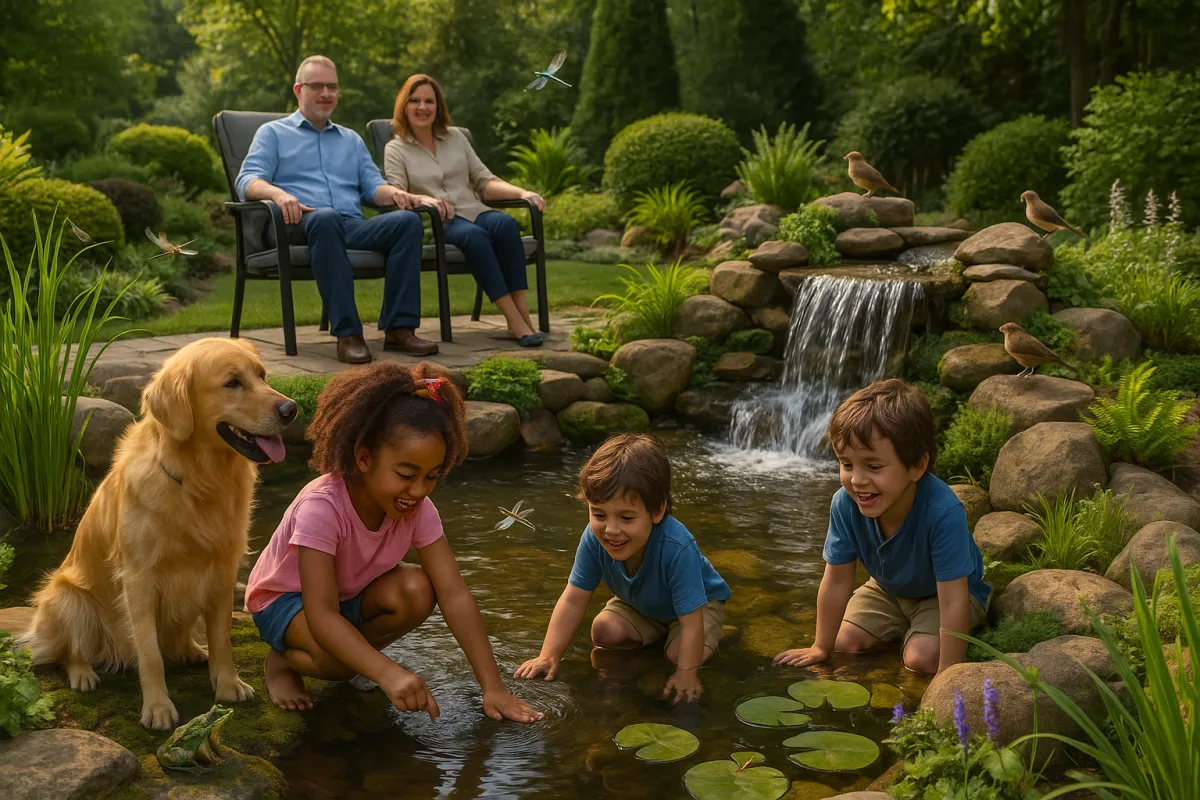
Natural Pest Control
How a Pond Can Help Keep Bugs at Bay
If mosquitoes, gnats, and garden pests are keeping you from enjoying your outdoor space, you’re not alone. Many homeowners reach for sprays, traps, or chemical repellents—only to get temporary relief. But what if nature had a smarter, more sustainable solution?
A well-designed pond or water feature can do more than beautify your backyard—it can actually help control pestsnaturally and effectively.
1. Attract Natural Predators That Eat Pests
One of the biggest advantages of a pond is its ability to attract beneficial wildlife that keeps pest populations in check.
Here's who shows up to help:
Frogs and Toads: These amphibians are voracious insect eaters. A single toad can consume up to 100 insects a night—including mosquitoes, slugs, and flies.
Dragonflies: Often called “mosquito hawks,” dragonflies and their larvae feed on mosquitoes at every stage of their life cycle.
Birds: Many songbirds, drawn to the water, will also feast on insects, caterpillars, beetles, and more.
Bats: At dusk, bats may swoop in to snack on hundreds of mosquitoes per hour.
Your pond becomes an invitation to the ecosystem’s best exterminators.
2. Disrupt Mosquito Breeding with Flowing Water
Still water is a breeding ground for mosquitoes—but a properly built pond isn’t “still” at all.
What helps:
Circulating water: Pumps, waterfalls, or bubbling features prevent mosquitoes from laying eggs.
Fish (like mosquito fish or goldfish): These natural predators feed on larvae before they ever become biting adults.
Filtration systems: Keep water clean and oxygenated—bad for pests, good for everything else.
So instead of becoming a mosquito magnet, your pond actually works against them.
3. Support a Balanced Ecosystem
Unlike chemical solutions, a pond works with nature, not against it. By encouraging biodiversity in your backyard, you create a self-regulating environment that keeps pest numbers low.
A balanced pond includes:
Native aquatic plants that provide shelter and oxygen
Beneficial bacteria that reduce algae and organic buildup
Insect-eating animals that stick around as long as their habitat is safe and clean
When the ecosystem is in sync, pests don’t stand a chance.
4. Avoid Harmful Pesticides and Chemicals
Using chemical sprays and granules to kill bugs might seem effective—but these solutions:
Don’t last long
Harm pollinators and birds
Can contaminate soil and runoff into local water systems
May not be safe for kids, pets, or the environment
With a pond, you're reducing your dependency on artificial pest control—and keeping your yard safer for everyone who visits (human or otherwise).
Bonus: It Looks (and Sounds) Better Than a Bug Zapper
Let’s be honest: nothing ruins the vibe of a peaceful evening like a buzzing zapper or citronella cloud. A pond, on the other hand:
Looks stunning
Adds relaxing sound with waterfalls or streams
Increases property value
Supports wildlife and pollinators
You get beauty, serenity, and pest control—all in one feature.
Ready for a Natural Upgrade?
A pond isn’t just a water feature—it’s a living solution to one of the most frustrating problems homeowners face. If you’re tired of swatting and spraying, maybe it’s time to let nature lend a hand.
Let’s design a pond that works for you and your backyard.
Curtis King
(240) 249-POND (7663) DC & Maryland
(434) 226-POND (7663) Virginia
(540) 272-6866 Main Office
www.prestigepond.com
